non-core Caryophyllales
Polygonales
Pam Soltis, Doug Soltis, and Monica Arakaki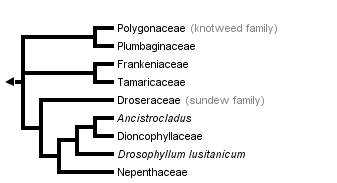


This tree diagram shows the relationships between several groups of organisms.
The root of the current tree connects the organisms featured in this tree to their containing group and the rest of the Tree of Life. The basal branching point in the tree represents the ancestor of the other groups in the tree. This ancestor diversified over time into several descendent subgroups, which are represented as internal nodes and terminal taxa to the right.

You can click on the root to travel down the Tree of Life all the way to the root of all Life, and you can click on the names of descendent subgroups to travel up the Tree of Life all the way to individual species.
For more information on ToL tree formatting, please see Interpreting the Tree or Classification. To learn more about phylogenetic trees, please visit our Phylogenetic Biology pages.
close boxIntroduction
The non-core Caryophyllales clade (sensu Cuénoud et al. 2002), which corresponds to the Polygonales of Judd et al. (2002), has only recently been identified through molecular phylogenetic analysis. It includes several families that were previously classified in Cronquist’s (1981) Rosidae or Dilleniidae.
Characteristics
Possible synapomorphies for the non-core Caryophyllales (= Polygonales sensu Judd et al. 2002) are scattered secretory cells containing plumbagin, naphthaquinone (which has been lost in several clades), an indumentum of stalked, gland-headed hairs, basal placentation (with shifts to parietal in some Droseraceae and axile in Nepenthaceae), and starchy endosperm (Judd et al. 2002). Polygonaceae and Plumbaginaceae are united by ovaries with a single ovule and generally indehiscent fruits such as achenes or nuts. The clade of Droseraceae, Nepenthaceae, and relatives is probably supported by carnivory, circinate leaves, and pollen grains in tetrads (Judd et al. 2002).
Discussion of Phylogenetic Relationships
There are three major clades within non-core Caryophyllales:
- Polygonaceae (43 genera, 1,100 species; cosmopolitan) and Plumbaginaceae (22 genera, 800 species; cosmopolitan, but centered in the Mediterranean region) form a strongly supported clade, as they have in many previous analyses (e.g., Giannasi et al. 1992; Rettig et al. 1992).
- Tamaricaceae (5 genera, 90 species; Eurasia and Africa) and Frankeniaceae (monogeneric with 90 species; cosmopolitan)
- Carnivorous plants classified in Droseraceae (3 genera; 115 species; cosmopolitan), Drosophyllaceae (monospecific; Spain and Morocco), Dioncophyllaceae (3 monospecific genera; western Africa), and Nepenthaceae (monogeneric with 90 species; Madagascar to New Caledonia), together with Ancistrocladaceae (monogeneric with 12 species; tropical Africa to Borneo and Taiwan).
The relationship between Droseraceae and Nepenthaceae, and their relationship to Caryophyllidae sensu Cronquist (1981), was first recognized on the basis of rbcL sequences (Albert et al. 1992; Chase et al. 1993; Williams et al. 1994). Analyses of matK sequences alone for several species of Nepenthes, Drosera, and Ancistrocladus, plus Drosophyllum and all three genera of Dioncophyllaceae, resulted in a well-supported tree with Droseraceae sister to a clade of Nepenthaceae , (Drosophyllum , (Dioncophyllaceae , Ancistrocladaceae)) (Meimberg et al. 2000).
References
Albert, V. A., S. E. Williams, and M. W. Chase. 1992. Carnivorous plants: phylogeny and structural evolution. Science 257:1491-1495.
Chase, M., Soltis, D. and R. E. A. Olmstead. 1993. Phylogenetics of seed plants: an anlysis of nucleotide sequences from the plastid gene rbcL. Ann. Miss. Bot. Gard. 80: 526-580.
Cronquist. 1981. An integrated system of classification of flowering plants. Columbia University Press, New York.
Cučnoud, P., Savolainen, V. Chatrou, L. W., Grayer, P. M., R. J., and M. Chase. 2002. Molecular
Giannasi, D. E., Zurawski, G., Learn, G. and M. T. Clegg. 1992. Evolutionary relationships of the Caryophyllidae based on comparative rbcL sequences. Systematic Botany 17: 1-15.
Judd, W. S., Campbell, C. S., Kellogg, E. A. and P. F. Stevens. 2002. Plant systematics: a phylogenetic approach. Sinauer Associates, Inc., Sunderland, Massachusetts.
Meimberg, H., P. Dittrich, G. Bringmann, J. Schlauer, and G. Heubl. 2000. Molecular phylogeny of Caryophyllidae s. l. based on matK sequences with special emphasis on carnivorous taxa. Plant Biology 2:218-228.
Rettig, J. H., Wilson, H. D. and J. M. Manhart. 1992. Phylogeny of the Caryophyllales--Gene sequence data. Taxon 41: 201-209.
Williams, S., Albert, V., and M. Chase. 1994. Relationships of Droseraceae: a cladistic analysis of rbcL sequence and morphological data. American Journal of Botany 81: 1027-1037.
Title Illustrations

| Scientific Name | Polygonum bistorta |
|---|---|
| Copyright |
© 2004 Kurt Stüber

|
| Scientific Name | Drosera intermedia |
|---|---|
| Location | coastal Mississippi, USA |
| Acknowledgements | Photograph courtesy InsectImages.org (#1241028) |
| Specimen Condition | Live Specimen |
| Source Collection | Bugwood Network/Forestry Images |
| Copyright | © James Henderson, Gulf South Research Corporation |
| Scientific Name | Nepenthes rajah |
|---|---|
| Location | Sabah, Malaysia |
| Specimen Condition | Live Specimen |
| Identified By | Ch'ien Lee |
| Life Cycle Stage | Mature plant |
| Body Part | Lower pitcher |
| Size | c. 20 cm long |
| Copyright |
© 2006 Chien Lee

|
About This Page

Florida Museum of Natural History and the Genetics Institute, Gainesville, Florida, USA
Doug Soltis

Department of Botany and the Genetics Institute, Gainesville, Florida, USA
Monica Arakaki

University of Florida, Gainesville, Florida, USA
Correspondence regarding this page should be directed to Monica Arakaki at
Page copyright © 2006 , , and
 Page: Tree of Life
non-core Caryophyllales. Polygonales.
Authored by
Pam Soltis, Doug Soltis, and Monica Arakaki.
The TEXT of this page is licensed under the
Creative Commons Attribution License - Version 3.0. Note that images and other media
featured on this page are each governed by their own license, and they may or may not be available
for reuse. Click on an image or a media link to access the media data window, which provides the
relevant licensing information. For the general terms and conditions of ToL material reuse and
redistribution, please see the Tree of Life Copyright
Policies.
Page: Tree of Life
non-core Caryophyllales. Polygonales.
Authored by
Pam Soltis, Doug Soltis, and Monica Arakaki.
The TEXT of this page is licensed under the
Creative Commons Attribution License - Version 3.0. Note that images and other media
featured on this page are each governed by their own license, and they may or may not be available
for reuse. Click on an image or a media link to access the media data window, which provides the
relevant licensing information. For the general terms and conditions of ToL material reuse and
redistribution, please see the Tree of Life Copyright
Policies.
- First online 07 June 2006
- Content changed 07 June 2006
Citing this page:
Soltis, Pam, Doug Soltis, and Monica Arakaki. 2006. non-core Caryophyllales. Polygonales. Version 07 June 2006 (under construction). http://tolweb.org/non-core_Caryophyllales/20968/2006.06.07 in The Tree of Life Web Project, http://tolweb.org/




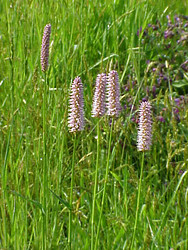
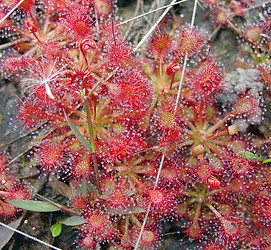
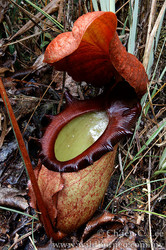

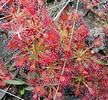


 Go to quick links
Go to quick search
Go to navigation for this section of the ToL site
Go to detailed links for the ToL site
Go to quick links
Go to quick search
Go to navigation for this section of the ToL site
Go to detailed links for the ToL site